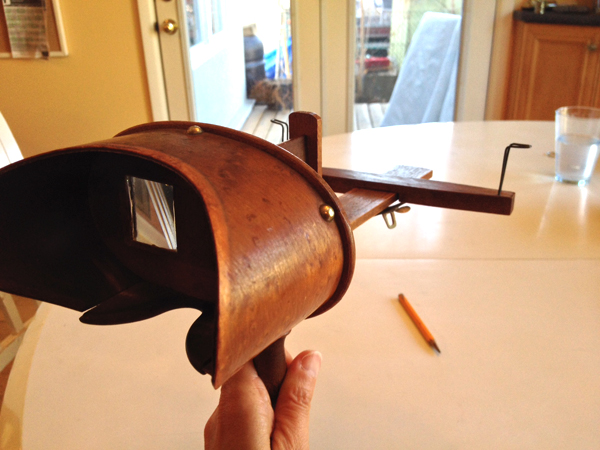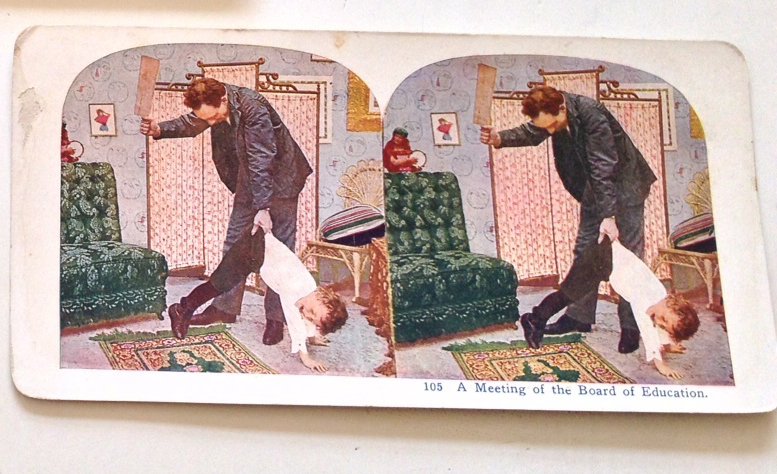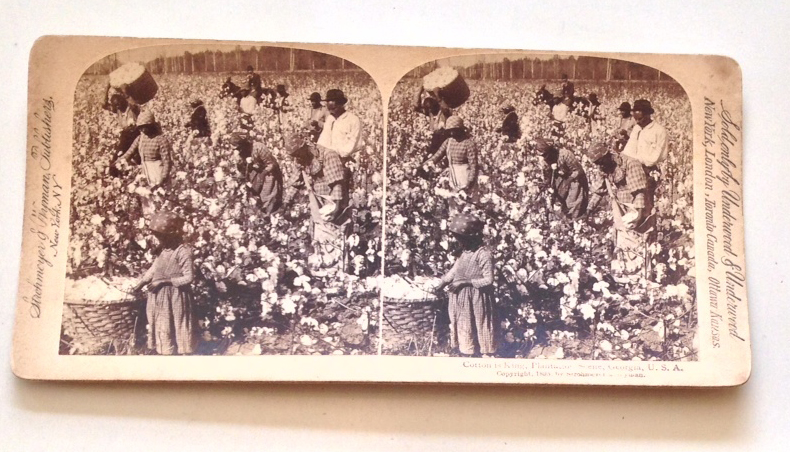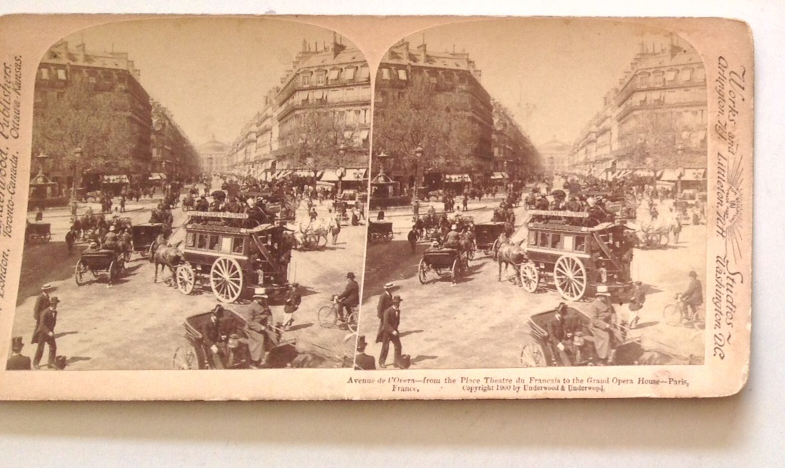Hi Shaun,
I was given this antique stereoscope by my mother. There is also a big tin of the cards that fit into this gizmo. I wonder about its value and resale possibilities. Many thanks for any expert opinions.
Sabrina McTaggart
–
Hi Sabrina,
You’re right! What you’ve sent me is a photograph of a Holmes “stereoscope” viewer. Oliver Wendell Holmes developed the device in the mid 1800’s. These viewers are quite common, especially the hand held variety such as yours.

Around 1900 and several years thereafter, I imagine there was one of these viewers in most Canadian parlours. They were the equivalent of the modern day video game. They would be brought out to entertain family and friends with images of far off places, cities, towns, parks, exotic animals and the like.
As you know, the card, with parallel images of the same photo, was placed in the wire holder at the end of the unit. One adjusted the focus by sliding or adjusting the position of the photo along the stem in front of the wooden “goggle” section of the unit, which housed two lenses. The double image, one for each eye, enhanced the effect and simulated a three-dimensional viewing experience. I believe a similar model came with a base so it could stand on its own on a tabletop.
The cards, in black and white and colour-tinted, had various themes and are also popular items with collectors.
The retail value of your model would be in the $65 to $95 dollar range. Individual cards can be purchased for $4 to $6 or less depending on their condition. Unusual or hard to find images would cost in the $8 to $15 range and higher, depending on the subject matter. [story continues below]



It’s interesting that the viewing portion of your stereoscope is finished with bird’s eye maple. The use of “figured” woods always adds an elegant and interesting flair. It also adds to the value especially in furniture pieces.
I have owned a desktop version of a viewer. They are much less common and therefore more difficult to find. They operate much the same way but they are larger in size and not meant for hand held use. The one I had is called a “graphoscope” and was quite showy with extensive use of walnut and pierced decorative wood trim.
The stereoscope was popular for many years and I would hazard to guess that it would still be a popular item if you brought it out at your next house party! Thanks for sending along the photo.
Collectable Treasures is a column by Shaun Markey, a resident of Westboro and the author of Folk Art in the Attic. He also blogs about antiques at folkartintheattic.blogspot.ca. If you have an antique or collectable and are curious about its past and approximate value, email a photo to shaunmarkey@rogers.com. Please make sure that details are visible. Any extra information you can share about your treasure is helpful too. Your item – and its story – might be published in the next column.